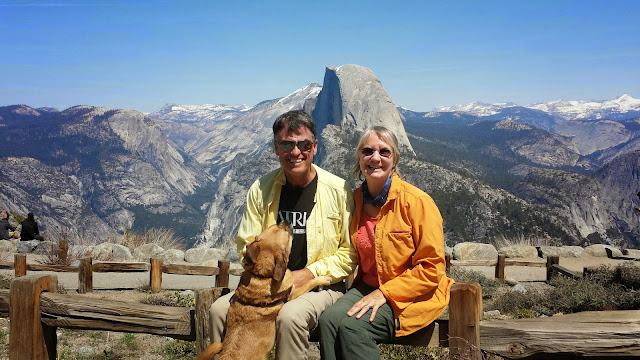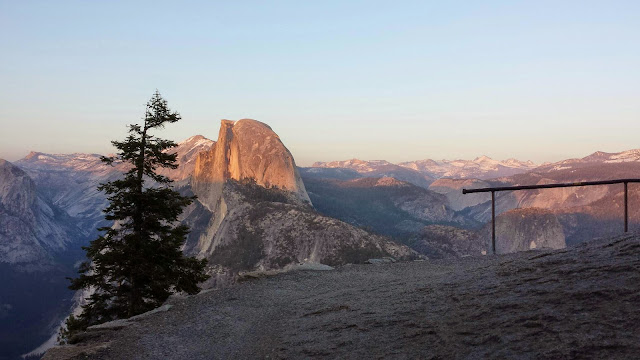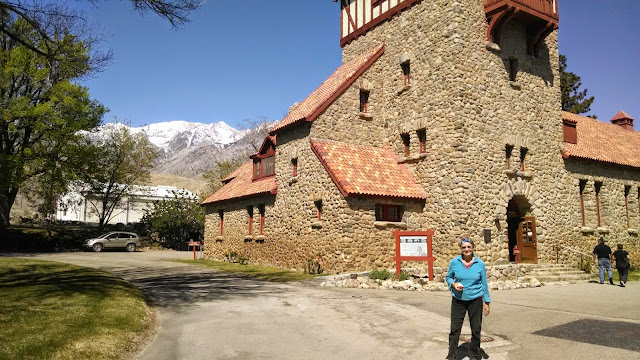Inquiring minds may want to know a bit more about how we
live, day-to-day. Our routine varies
depending on where we happen to be, but there is a structure to our days that
holds pretty true when we aren’t on a traveling day. I’ll describe a typical day of boondock
camping (no water or electric hookups) here in Yosemite.
I usually wake up around 7, throw on my sweatpants, and
Tucker and I leave the bedroom for the living room and turn up the
furnace. I’ll feed Tucker and take him
for a quick walk and on my way back to the trailer I turn on the inverter (this
device gives us 110V AC power to run our hand blender, charge the laptop, watch TV in the evenings and on cold nights
run the bed warmer before we retire). I’ll eat a grapefruit, blend up a
smoothie and have a cup of coffee while Lynnae gets up (AFTER the place warms
up some) and has her breakfast. There is only room for one person to use the kitchen at a time. This morning I had to add fresh water, using five-gallon water jugs, to our holding tank because the water filler spigot in this campground wasn't working when we first drove in
We
usually read or putter or write on the blog for a few hours, then make a big
salad in to-go containers to pack for a hike.
Around 10 or 11, we change into shorts and throw lunch and our packs
into the truck and drive to a trailhead.
We’ll usually pick a hike from 3 to 5 hours, maybe 6 and eat lunch on
the trail. We might take Tucker or leave
him to his beauty sleep. Arriving back
at the trailer around 4, we spend the next few hours having a beer, taking a
shower and fixing dinner. Dinner will be
eaten outside if nice or inside if cold and might be enchiladas, pasta with
vegetables, grilled fish and vegetables, or our favorite--fish tacos. After dinner we might have a fire outside and
retire early or read or turn on the inverter and put on the TV and watch an episode of whatever series
we are watching (right now it’s House of Cards, season 1). We are usually in bed by 9 or 10.
We’ll usually alternate hiking days with in-camp days where
we get to putter more, ride our bikes, draw, mess with photograph files,
etc. We usually eat out every week or 10
days, more if we are near a city, but we cook and eat well at home and are more
often disappointed by the restaurants we find. We might do a museum or
historical site instead of a hike and sometimes there is project work to be
done around our rig (there’s ALWAYS something to fix or improve; I’ll write
about my solar electric project some day).
There is periodically some forward travel planning we need to do. Once a
week or so is laundry and clean up the trailer day, but for our small place,
cleanup takes only an hour or so for the both of us to do.
That’s it! Life is pretty simple, and without a house or
jobs or kids at home or much responsibility we have a lot of time to read and ponder and
appreciate whatever our surroundings may be. We are so grateful.




